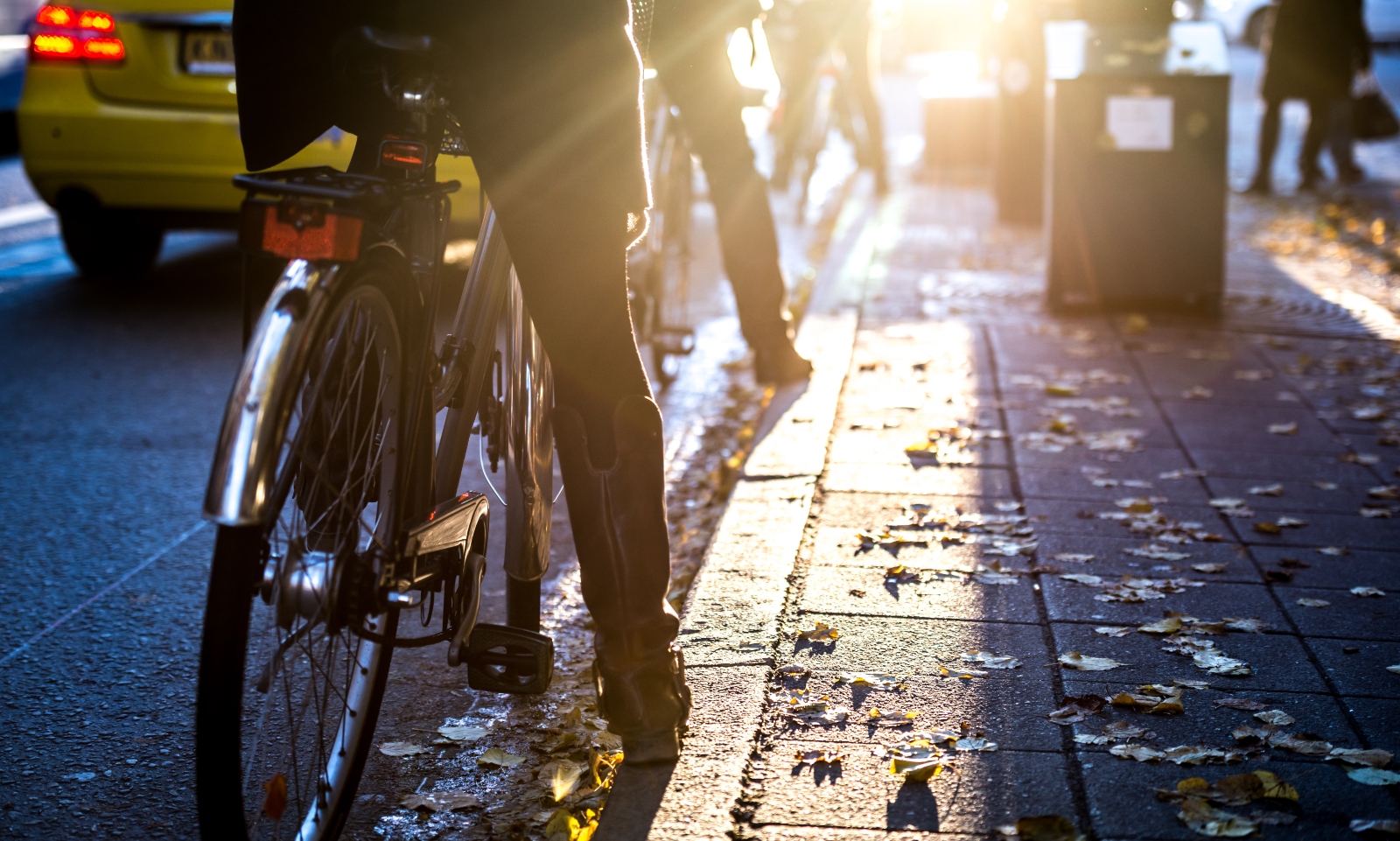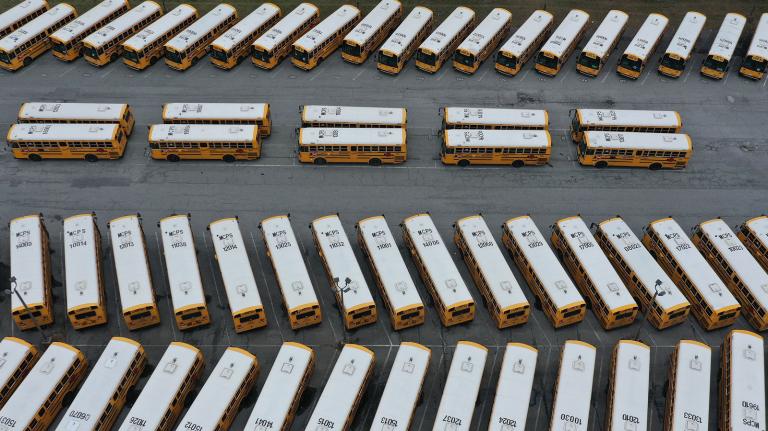Amanda Eaken is a transportation policy expert at the Natural Resources Defense Council, the transportation director for the Bloomberg Philanthropies American Cities Climate Challenge, and vice chair of the San Francisco Municipal Transportation Agency Board of Directors. She lives in San Francisco.
As a transportation advocate, it’s weird to work from home. At the beginning of this year, I would hop on the 5 Fulton bus or ride my bike down car-free Market Street to my office, where I direct transportation programs for the Bloomberg Philanthropies American Cities Climate Challenge. Often, I’d take the Muni Metro light rail to City Hall for meetings. Now, I do all of this from home, connecting virtually with colleagues who are sometimes just a few bus stops away.
Of course, I’m not the only one: In San Francisco, we lost 90 percent of our transit ridership, as did many of the 25 cities I work with through the Climate Challenge. The lost revenue gutted plans for growth, eliminated routes, and increased wait times for the essential workers still riding every day. According to a report by the TransitCenter foundation, service cuts hit Black and Latino residents the hardest.
And so our cities are facing tough decisions: Whether it’s painful service cuts or choices about where to place new car-free streets and bike lanes, the challenge is fundamentally about what our communities need to safely walk, ride, and roll.
Usually, cities make decisions like these by announcing a proposal at a meeting and allowing time for public comments (or sometimes at a more formal hearing or town hall). Of course, we can’t do any of that in person right now. But we must admit that the town hall model was already broken, leaving out residents who didn’t have the time or resources to get to a meeting, faced language barriers, or felt disempowered after seeing their communities ignored year after year. Too often, even when people did show up, it turned out solutions were already fully baked or that the deep, systemic solutions needed were never even on the table.
All of these failures perpetuate a racist, classist legacy of top-down city planning that leaves many low-income people and people of color — many of the essential workers riding to work today — without affordable, efficient, safe rides. While digital engagement does not inherently fix these problems, cities are having to rethink how they connect with communities. And that’s happening in some exciting ways.
For example, at the first virtual forum for its Climate Action Plan, the city of San Diego collected real-time reactions from more than 175 attendees. When the forum host asked what changes residents want to see in their communities, responses popped up on the screen ranging from “air quality” to “coastal habitat restoration” to “electrify everything!” In response to the prompt “When you imagine a sustainable San Diego, what comes to mind?,” the group generated a live word cloud — parks, bikes, less traffic, fresh produce, resiliency.
Other cities are taking a different approach to virtual forums, hoping to collect feedback through informative websites rather than at a live event. As part of an effort to transform Pennsylvania Avenue SE in Washington, D.C., to better meet the diverging needs of cyclists, buses, and drivers, the District Department of Transportation built a microsite with all of the background information residents needed to weigh in with their ideas. The department received over 300 comments, far more than expected, highlighting the value of allowing residents to review proposals and offer opinions on their own time.
This past spring, Denver’s Climate Action Task Force took this approach one step further when they used a web forum to gather residents’ opinions on dozens of ideas, ranging from expanding electric car-shares to providing subsidized transit fares for certain residents. The effort was incredibly successful: People indicated opposition or support for ideas, added in proposals of their own for consideration, and had the chance to view the perspectives of others in real time.
Of course, even the most engaging website or presentation is not immune from one of the key challenges to effective public engagement: language barriers. That’s why, as part of the community outreach in planning a new electric vehicle car-share and charging network, Minneapolis and St. Paul have translated materials and surveys to serve Hmong, Somali, Karen, Oromo, and Spanish-speaking residents.
As we’re considering what equitable engagement truly means, it’s clear we’ve all got room to grow. For example, how are we reaching people without internet access at home or people who aren’t used to using technology at all? What structures can we put in place to make sure that cities truly incorporate feedback into planning? What does it look like for communities to set their own priorities and make their own decisions about how to use street space?
Asking the big questions will have value far beyond this year, and that’s exactly the point. If we can truly meet this moment, 2020 will surely have been a transformative year for transit — even if some of us just stayed home.



